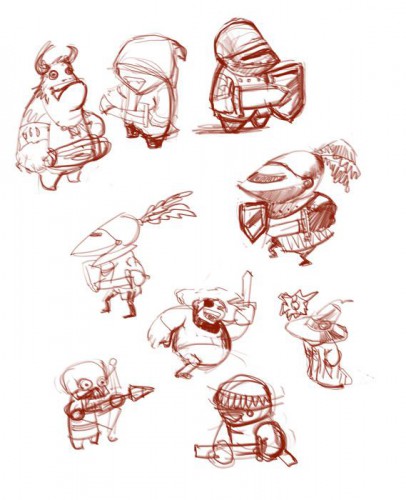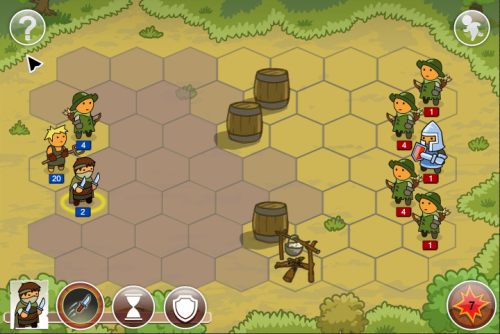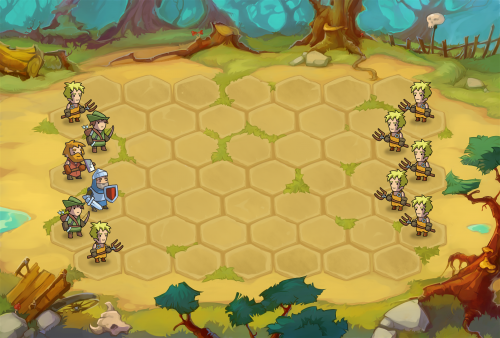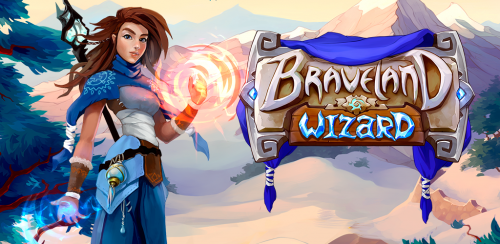Game designer and co-founder of Tortuga Team Anton Mikhailov said App2Top.ru the history of the development of the turn-based strategy Braveland, and also shared the financial results of the series.

Before Braveland, in addition to our main work, we created small indie games as a hobby, after work. It was going quite slowly. I wanted something more than just a modest toy, but there were no opportunities. Plus, at that time there was already a dominance of freeplay in the world, so there was also a desire to create a good paid game that could be played both on PC and on mobile devices.
Specifically, the idea of Braveland arose in 2012, when I started thinking about a turn-based strategy that would combine the spirit of old-school strategies and a modern approach to gameplay. The setting and visuals of Kingdom Rush looked perfect for such a project, as did the undeservedly forgotten Heroes of Might and Magic mechanics.
Despite the fact that the idea of such a project – a casual version of “Heroes” – lay on the surface, then few people believed in it. The idea did not arouse enthusiasm among the comrades, so I had to take up the development myself: shake off the dust from the ActionScript textbook and start writing a prototype.
Prototyping in the Inkscape Vector Graphics Editor
It all started with a reference sketch in Inkscape. It was necessary to understand the visual component, to determine whether it is convenient enough to play such a game both on a PC and on a smartphone. After that, based on the sketch, I began to develop a prototype of the game. It took me about two months.
With the working build, it became much easier to convince others of the viability of the project: in addition to me, an artist joined the project, who began to draw sketches of creatures on the battlefield and make animations.
The first sketches
Despite the fact that there were already two of us, the work was going quite slowly. At that time, the project participants were still busy with their main jobs and could only work on Braveland in the evenings. But for some time it was possible to cut out and in the spring of 2013, almost a year after the start of development, a full-fledged flash version of the turn-based strategy was ready. It wasn’t Braveland then. The style of the game was more in the spirit of Scribblenauts than Kingdom Rush. We wanted to place this forerunner of the big Braveland at the FGL auction, which was popular at that time.
This is what the ready-to-release flash version of the turn-based strategy looked like
The first incarnation of the game was a kind of classic toy for portals lasting about an hour (which by the standards of portals is not so little). The plot was limited to briefings at the beginning of missions. It was only possible to buy more fighters in between missions. There were no equipment, hero levelups, moving around the map, dialogues and much more.
Before sending the finished game to the auction, I decided to send it to my friends again and listen to what they have to say.
The reviews were so enthusiastic that we decided not to release the game on flash portals, but to immediately remake it into a strong cross-platform project. There was an impressive reversal, if not by 180, then at least by 90 degrees.
We have an investor – one of the future co-founders of the Tortuga Team, who financed the creation of new graphics, promotional materials and music. The team also received a programmer and an artist who began to study Braveland full-time.
Due to the fact that Braveland was made on the basis of a ready-made toy, there were almost no problems with the game mechanics. We have also already tested Unity on our small projects before the start of Braveland.
Plus, I had experience developing step-by-step strategies and some mathematical training. Roughly speaking, a couple of basilisks had already been eaten in this field, so I knew from which side to approach the problem of balancing games.
The whole point of Braveland’s game balance is to create a sufficiently plausible model for predicting the interaction of creatures on the battlefield and the player’s progress as a whole. To do this, use regular Excel. After creating a model in the table, you check it on creatures from other games – Heroes of Might and Magic or King’s Bounty. You look to see if creatures of the same species turn out to be similar in strength. If so, then you can start creating your own creatures. You check them for balance relative to each other. There are many nuances, you can’t do without playtests here. But the number of these playtests can be reduced by a good model.
It is also very important to create a good model of the balance of global player development, since a six- to eight-hour-long strategic game playtest is a labor-intensive activity. Here you need to be able to predict how much experience and gold a player will receive for battles, predict what power he will have at each stage of the game.
It is difficult to get one-on-one in games where the strength of enemies is fixed, and there are several options for earning gold and experience, but you can achieve some understanding. You should not focus on “Munchkins”, or increase the strength of armies for them automatically, as they do in some RPGs. This approach should be resorted to only for highly resource-unbalanced gaming systems, like Skyrim.
That’s what I had to tinker with, so it’s with dialogues. I still rewrite them at least three times, even in our upcoming third book. New fighters and heroes are not always easy either.
The first tests to improve the characters
Sometimes we draw sketches of seven. And this is despite the fact that at the very beginning of the development of the Unity version, a new art was prepared.
Key art. It is created as a reference point for understanding the quality of the future game
By the way, we also have an eternal battle with voice acting.
Anyway, 8-9 months later – in January 2014 – we completed work on the game. It was a completely different Braveland. Only the basic combat mechanics remained from the old version.
It took us another month and a half to prepare the game for release – creating a video, screenshots, catching bugs, preparing versions for Steam, iOS and GOG. The preparatory work also included the development of a website and the creation of a press kit.
It took about three weeks to create the trailer alone
The release on the mentioned platforms took place in March.
On the day of the release, a pre-ordered mailing was made through the distribution services of press releases. By the way, such mailing is not very effective. Much more often, the press and YouTubers themselves track new items on Steam and the App Store. But I think it’s better to make some kind of inexpensive mailing list than to rely on chance.
In Russia, the press received us well, almost all major publications wrote about Braveland – Kanobu, Gambling, Riot Pixels, Gmbox and others. For which I sincerely thank them. For paid games, it is the reviews of the gaming press that are of key importance.
We also wanted to launch the game on Google Play, but we didn’t have time to do it. As it turned out a little later, it was a good idea to enter the mobile market only on the App Store. As a kind of exclusive for iOS, we were placed in the Hot New section in the USA for a week, which gave a great boost to sales.
But the Russian AppStore did not show us much attention. Although once we were added to the bundle by strategies, which is also not bad. However, even without active feathering in Russia, we sold well, and, as a result, Russia ranks second after the United States in terms of fees.
Looking back, we can note that we have clearly chosen the niche of midcore paid games for PC and mobile devices. The downsides of this strategy are obvious — it’s hard to be good on all platforms. And in our case, the PC version did not look “hardcore” enough, because in order to achieve a short session of 5 minutes, we cut off all the redundant interface and gameplay angles. We also had little communication with the community, and this is still our Achilles heel. But we are striving to correct this direction.
Poster for the second book
We sold the first part in the amount of more than 60 thousand copies. It is already the second year of sales of the game and the fees are about $ 100 thousand.
The shares of sites in the income of the first book:
- Apple – 48%
- Steam – 24%
- Google Play – 17%
- GOG – 4%
- Win Phone – 3%
- Other sites – 4%
The second part, Braveland Wizard, which we made in eight months, went worse, because it was no longer such an interesting topic for the press. But this is expected. If we did the advertising preparation as in “Game of Thrones”, then the success would be great. And I want to say that the game deserved more success, it was better than the first in everything: longer, with a spell system, plot forks, richer dialogues and a well-developed story.
In the third part, we are preparing even more surprises. I hope the players will like them.







